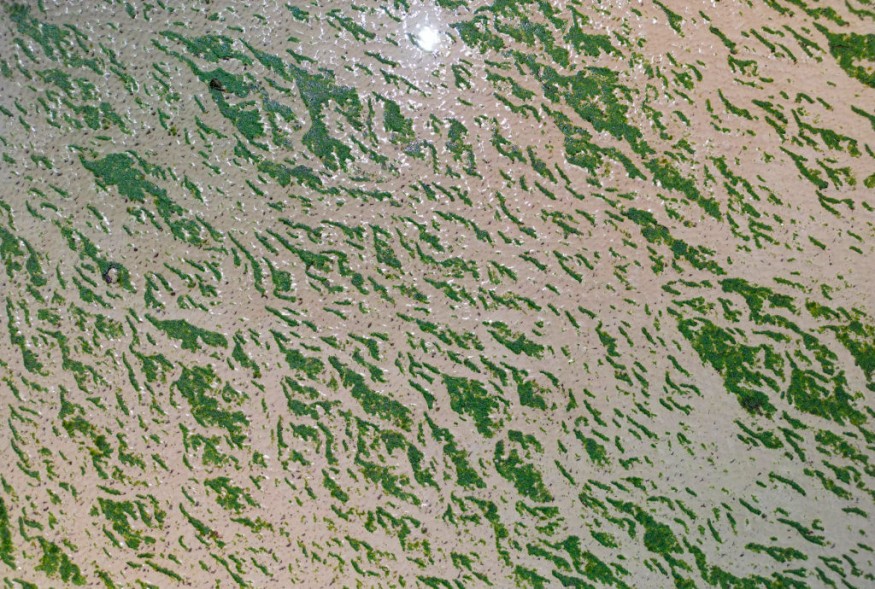The biggest freshwater lake in California has turned bright green in color as a result of algae blooms so strong that they can be seen from space.

Algae Bloom
Dubbed the "bass capital of the west," Clear Lake, which spans over 68 square miles in northern California, is a major hub for fishing, water sports, and other recreational activities. About 100 kilometers to the north of San Francisco is the lake.
The NASA shared the satellite images from mid-May, where the images revealed "bright green swirls were visible across most of the lake's area," which could have been brought on by other types of phytoplankton in addition to cyanobacteria, also referred to as blue-green algae.
Single-celled creatures called cyanobacteria use photosynthesis to convert sunlight into food. Some of these organisms also create a strong toxin called microcystin, which can damage the liver and kidneys in addition to irritating the skin.
Visitors have been advised by public health officials in the region to be mindful of the algae blooms, which includes avoiding water "that appears discolored, has scum layers, or emits a foul odor" and keeping pets away.
The cyanobacteria's emergence in Clear Lake is not unprecedented, it has happened earlier and in higher quantities than in previous years.
There is continual testing to keep an eye on the water's current toxic levels. For the past ten years, the Big Valley Band of Pomo Indians has been keeping an eye on the lake's water condition.
"This year has the earliest blooms since the Tribal program lakeshore cyanobacteria and cyanotoxin sampling began in 2014," a Clear Lake water quality Facebook page said.
Local water quality monitors had not yet provided data of microcystin concentrations for this bloom as of May 25. The quantity of algae could nevertheless be harmful to aquatic life even in the absence of toxins since dead phytoplankton is broken down by bacteria, which uses oxygen and can result in hypoxia and dead zones.
Global Warming
The lake is a naturally eutrophic, nutrient-rich body of water that fosters the growth of aquatic plants and algae. Sediment cores indicate that it has had significant algal populations for a long time-possibly since the end of the last ice age, some 10,000 years ago.
But as a result of increased nutrient inputs from humans, the lake has seen an upsurge in hazardous blooms in recent years. Three blue-green algae species are among the more than 130 known species of algae found in Clear Lake that, in some situations, may be harmful to human health.
"Runoff from nearby farms, vineyards, faulty septic systems, gravel mines, and an abandoned open-pit mercury mine contributes to water quality issues in the lake," according to NASA about Clear Lake.
Scientists have linked the rise in global warming and industrialized agriculture to an increase in the frequency and toxicity of algal blooms.
Related Article : The Ocean Can't Breathe: Mexico-Sized Algae Bloom in the Arabian Sea Should Concern You
© 2025 NatureWorldNews.com All rights reserved. Do not reproduce without permission.





